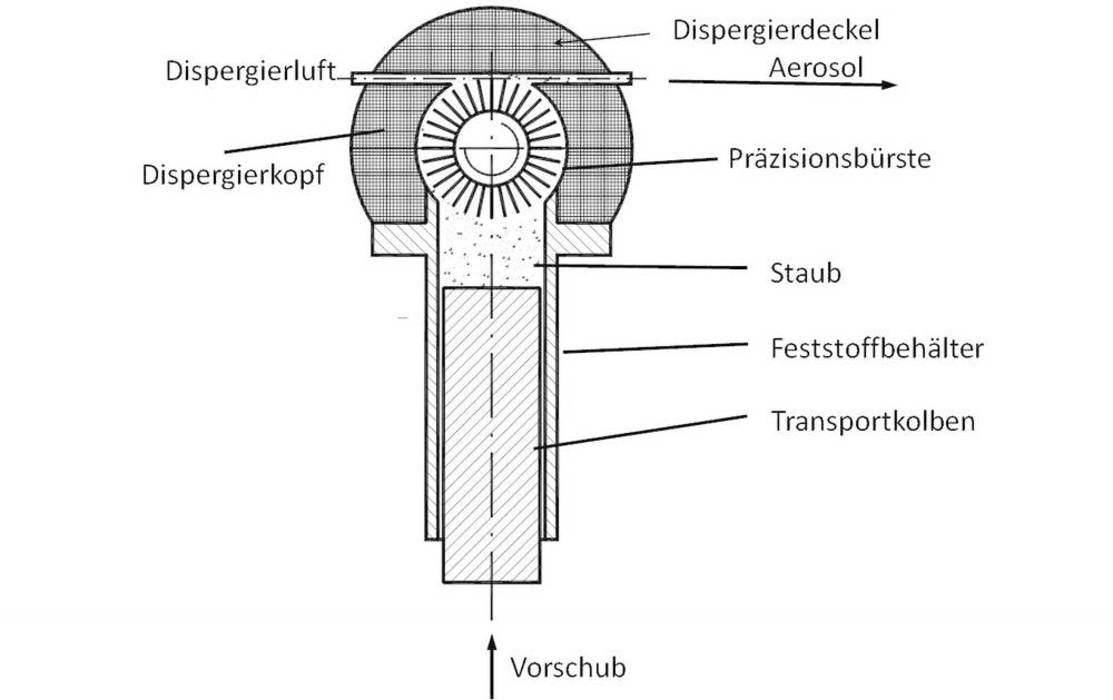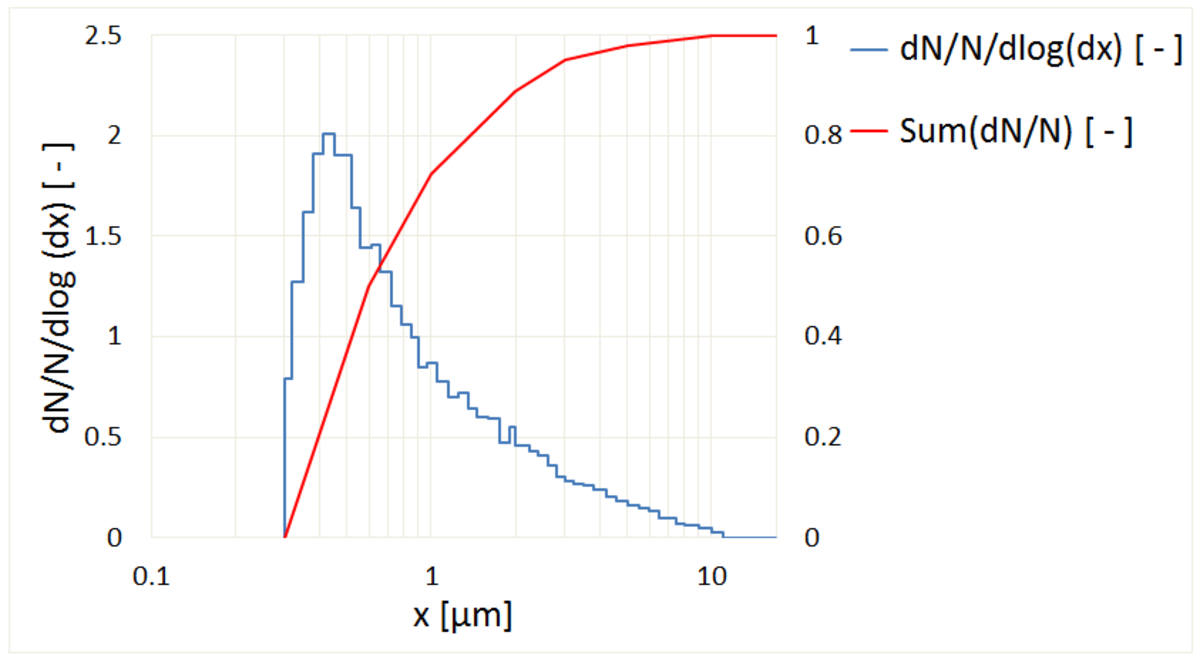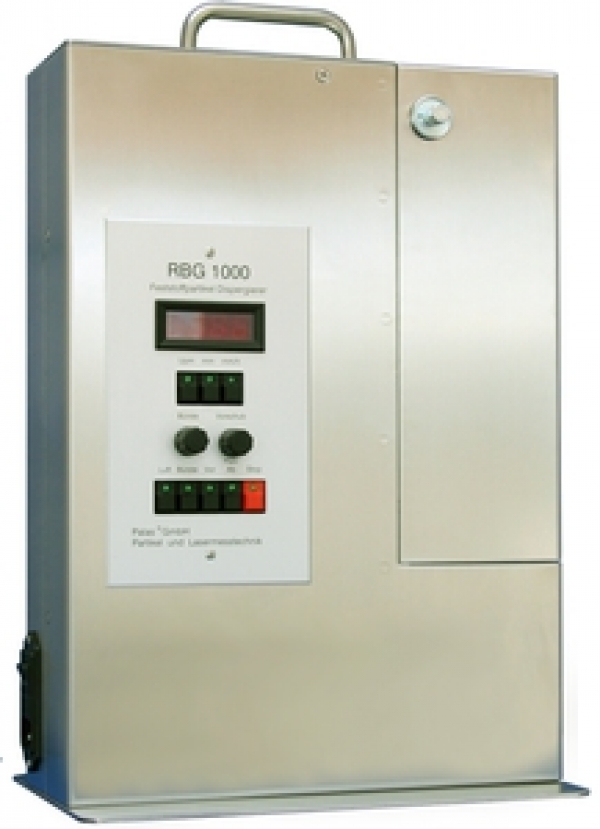Generation of test aerosols from powders, pollen and spores,
Mass flow approx. 10 mg/h - 430 g/h
For many applications in research, development and quality assurance and for the calibration of particle measuring instruments, low-concentration solid aerosols from powders are required.
The RBG system has been used for more than 25 years for the reliable dispersion of non-cohesive powders such as mineral dusts, medical agents, pollen etc. in the size range < 100 µm and with a fine fraction < 100 nm worldwide with great success. Monolithic solids, such as school chalk, are finely dispersed with maximum dosing consistency.
The particular advantage of this dosing and dispersing system is that the RBG 1000 disperses mass flows of approx. 10 mg/h to approx. 430 g/h with maximum dosing consistency by quickly and easily changing the solids container. The filling height of the solids container is 70 mm.
Optional:
- Pressure resistant up to 3 bar
- New: Vacuum operation from 300 mbar (absolute pressure), operation with nitrogen
commissioning
The powder to be dispersed is gradually filled into the cylindrical solid container and compacted with a stopper. As part of the validation of the guideline "Test methods for mobile room air cleaning devices" at the Lucerne University of Applied Sciences and Arts, excellent reproducibility of the packing density in the solids container was determined. The deviation of the stuffing densities from five fillings was only 3.4%.
The filled solids container is placed in the dispersing head of the RGB and the powder, which is uniformly compacted over the filling height, is transported against a rotating brush at a precisely controlled feed rate. An adjustable volume flow overflows the densely woven precision brush at very high speed and tears the particles out of the brush.
Optionally, the RBG 1000 L can be used to gravimetrically determine the entire discharged material.
The complete dispersing head consists of dispersing head, dispersing lid, precision brush and solids container.

The dosing takes place via the precisely controlled feed of the transport piston. The desired mass flows can be determined easily and reproducibly from the cross-section of the solids container, the precisely adjustable feed rate of the transport piston and the easily determined packing density of the powder in the container.
Dispersing
The powder quantity separated from the storage container by the precision brush is dispersed in the dispersing head by the dispersing air at high speed into almost all individual particles up to < 100 nm (see Fig. 2).

I = Version for inhalation D = pressure-resistant G = low feed speed L = easily removable and weighted-down dosing unit S = nitrogen version
Pulsed operation
Due to the design of the RBG system, impulse operation - "dust"/"no dust" - up to the second cycle is possible. The function can be set manually via the "Stop/Down" and "Forward" buttons or automatically via an electric timer.
All RBG versions can optionally be controlled by remote control or via the computer.
Advantages:
- Highest short-term and long-term dosing consistency
- Disperses practically all non-cohesive dusts
- Easy exchange of different solid containers and dispersing lids
- Simple determination and adjustment of the mass flow rate
- pulsed operation
- Easy cleaning of the device
- Quick and easy operation
- Reliable function
- Low maintenance
- Reduces your operating costs
Applications:
- Filter industry:
- Determination of fractional separation efficiency
- Determination of total separation efficiency
- long-term dusting
- Filter media and ready-made filters
- dedusting filter
- Vacuum cleaners and vacuum cleaner filters
- cabin air filter for passenger cars
- engine air filter
- Calibration of particle measuring instruments
- flow visualization
- inhalation tests
- Tracer particles for LDA, PIV etc.
- Coating of surfaces





